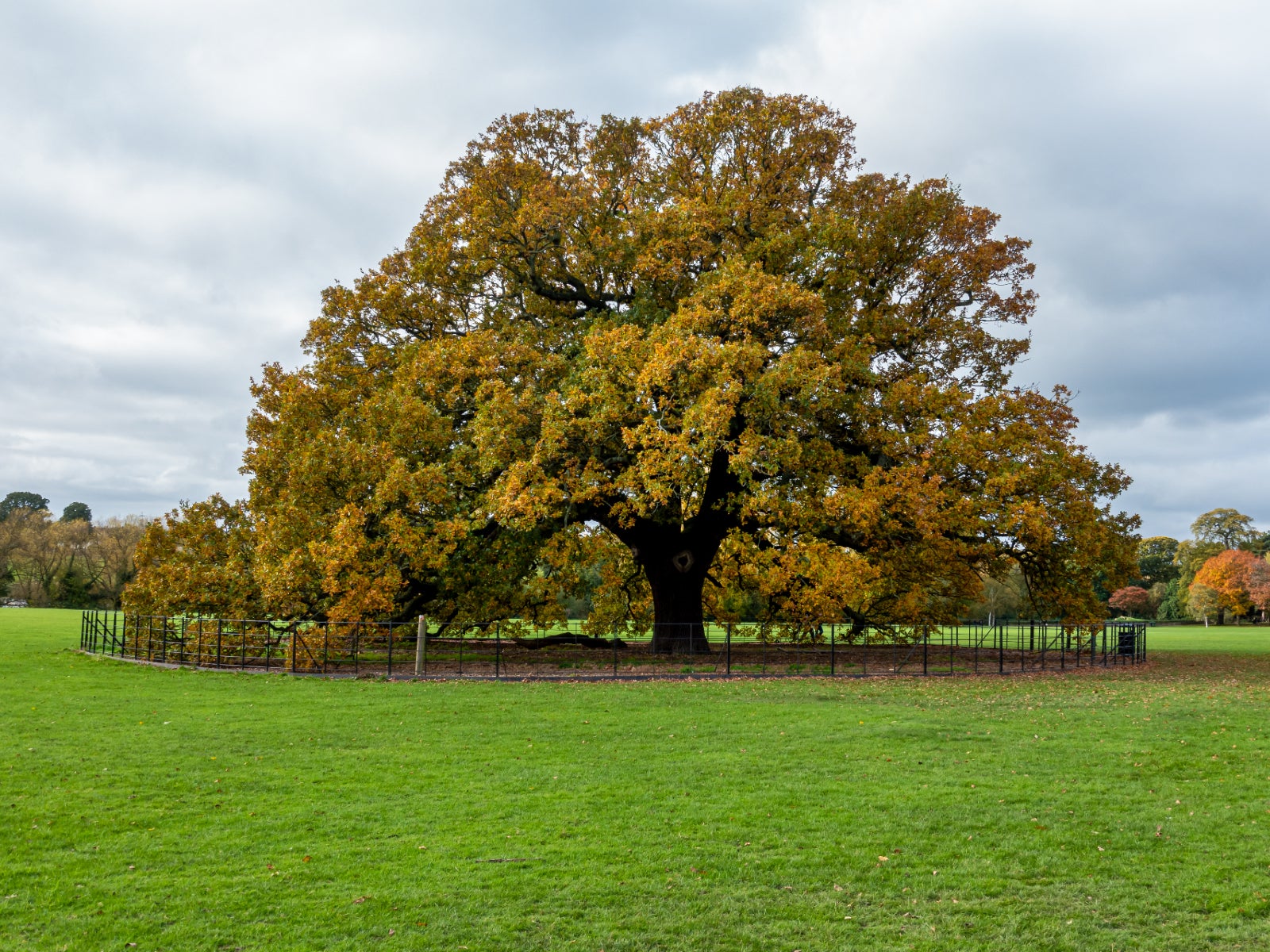Water Oak Tree Care: Growing Water Oak Trees In The Landscape


Water oaks are native to North America and found across the American South. These medium sized trees are ornamental shade trees and have an ease of care that makes them perfect in the landscape. Try growing water oak trees as street plants or primary shade trees but be aware that these plants are short-lived and can be assumed to survive 30 to 50 years. Read the article below for more water oak information.
Water Oak Information
Quercus nigra is a tolerant plant that can grow in partial shade or sun to full sun. These elegant trees are deciduous to semi-evergreen and an important part of ecosystems from New Jersey to Florida and west to Texas. Water oaks grow at a fantastic rate of up to 24 inches (61 cm.) per year. Caring for a water oak is easy, but it is a weak wooded tree prone to many diseases and insect pests. Water oaks produce copious quantities of acorns, which are a favorite food of squirrels, raccoons, turkeys, pigs, ducks, quail, and deer. Deer also browse young stems and twigs in winter. The trees tend to develop hollow stems, which are habitats for a host of insects and animals. In the wild, it is found in lowlands, flood plains, and near rivers and streams. It has the capacity to thrive in compact or loose soil, provided there is adequate moisture. Water oaks may be short-lived, but their rapid growth makes them an excellent shade tree for decades. However, special water oak tree care when young is essential to produce a strong scaffold. Both pruning and staking may be necessary to help the tree develop a sturdy skeleton.
Growing Water Oak Trees
Water oaks are so adaptable they are often used as residential, reclamation, or even drought zone trees. They may be planted in areas with pollution and poor air quality and the tree still thrives. The trees are reliably hardy in USDA zones 6 to 9. Water oaks get 50 to 80 feet (15-24 m.) tall with a nice cone-shaped crown. Bark ages to brownish black and is thickly scaled. Male flowers are insignificant but female catkins appear in spring and become wide, ½ inch (1 cm.) long acorns. The leaves are oblong, spatulate, and deeply tri lobed. Foliage may grow 2 to 4 inches (5-10 cm.) long. These trees are extremely adaptable and, once established, caring for a water oak is reduced to handling any pest or disease issues and providing supplemental water during extremely dry periods.
Water Oak Tree Care
Water oaks must be trained when young to prevent the crotch from splitting due to poor collar formation and the weight of the side limbs. Young trees should be trained to a central trunk for best plant health. The rapid growth of the plant contributes to its weak wood, which is often hollow by its 40th year. Provide young trees with plenty of water to ensure good cell development and thick wood. Oaks are host to a number of pest and disease issues. Caterpillars, scale, galls, and borers are the insects of most concern. Oak wilt is the most serious disease, but many fungal issues are often present. These might include powdery mildew, canker, leaf blight, anthracnose, and fungal leaf spot. A common deficiency in iron causes chlorosis and yellowing of the leaves. Most issues aren't serious and can be combated by good cultural care.
Gardening tips, videos, info and more delivered right to your inbox!
Sign up for the Gardening Know How newsletter today and receive a free copy of our e-book "How to Grow Delicious Tomatoes".

Bonnie Grant is a professional landscaper with a Certification in Urban Gardening. She has been gardening and writing for 15 years. A former professional chef, she has a passion for edible landscaping.
-
 4 Superfast Composting Methods: Turn Waste Into Garden Gold In 30 Days Or Less
4 Superfast Composting Methods: Turn Waste Into Garden Gold In 30 Days Or LessTry the fastest composting methods to turbocharge your pile and transform kitchen scraps and garden waste into finished compost in just a few weeks.
By Mary Ellen Ellis
-
 Best Spider Plant Soil – Complete Soil Guide And Expert Tips For Keeping Plants Happy
Best Spider Plant Soil – Complete Soil Guide And Expert Tips For Keeping Plants HappySpider plants are fun and easy plants to grow, but what is the best soil for a spider plant? Selecting the right soil is important so they can thrive.
By Bonnie L. Grant